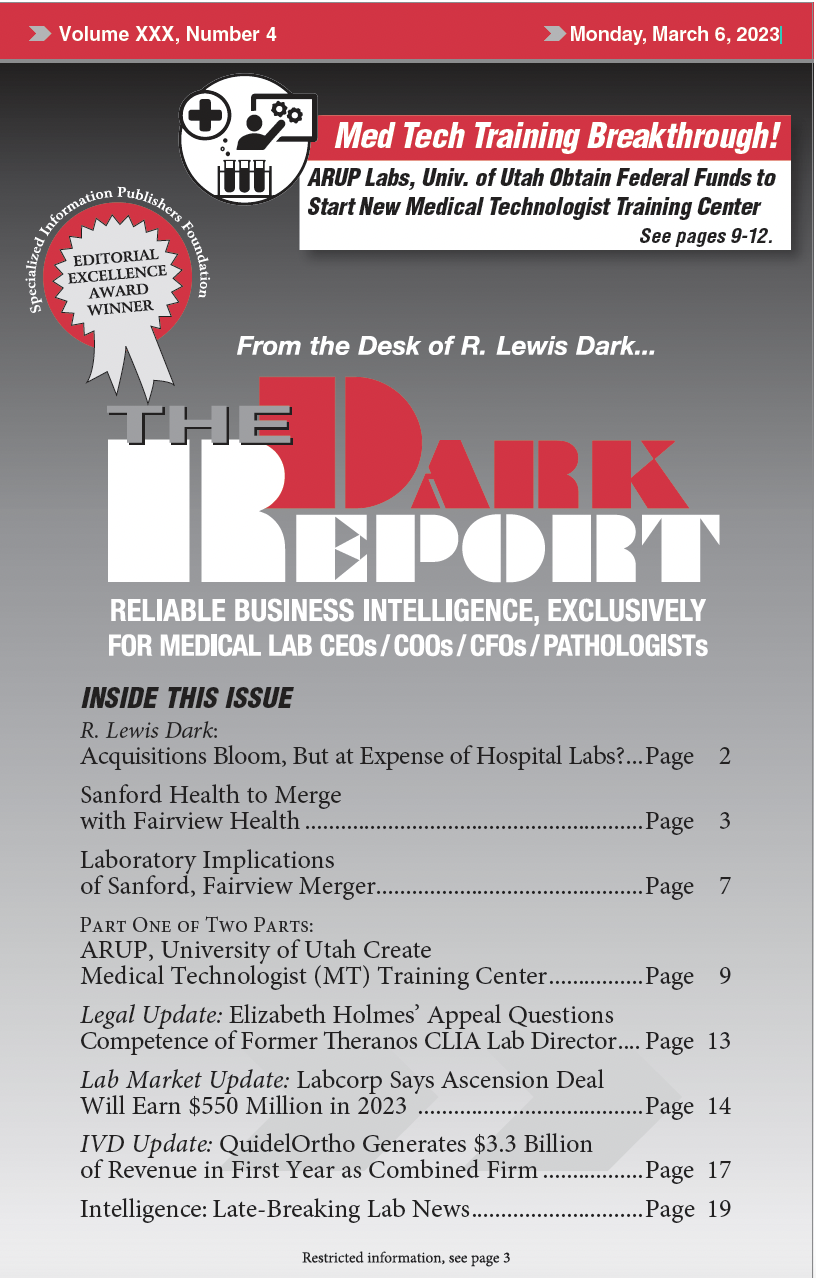CEO SUMMARY: To help resolve the ongoing shortage of MTs and MLSs, ARUP Laboratories and the University of Utah’s Medical Laboratory Sciences Division took a novel approach to secure funding for a new laboratory scientist training center. They worked with their congressional representative to obtain federal funds for the project. PART ONE OF TWO PARTS …
ARUP Laboratories and University of Utah Create MT Training Center Read More »
To access this post, you must purchase The Dark Report.


